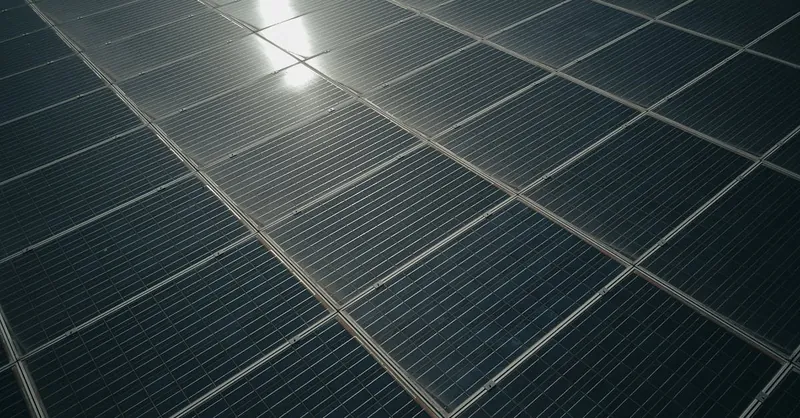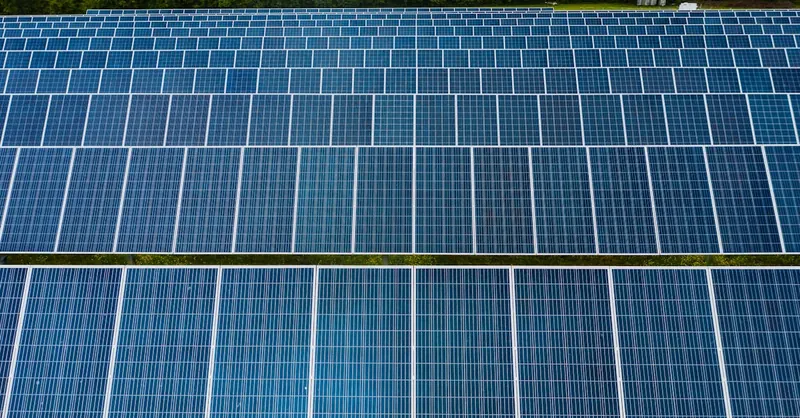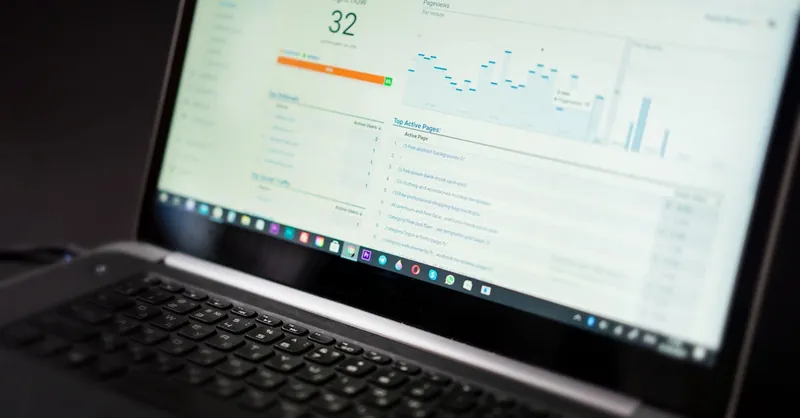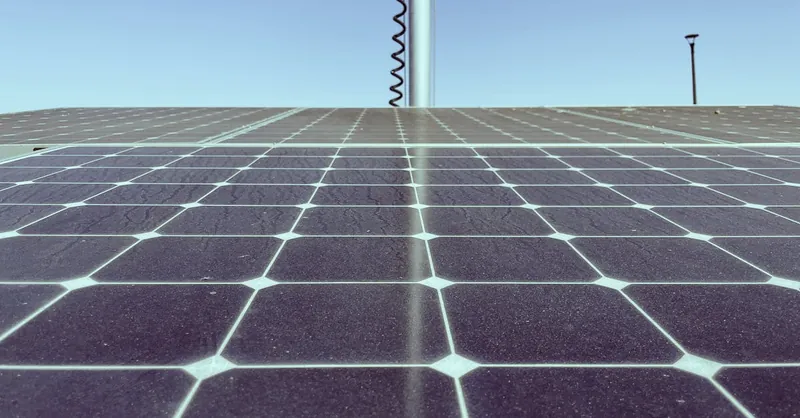Maximizing Solar Panel Output with Advanced Technology
Category: Renewable Energy
Unlocking the Full Potential of Your Solar Panels
Whether you're a curious beginner stepping into the world of renewable energy or an electrical engineer seeking in-depth technical insights, maximizing the output of solar panels is a quest filled with practical challenges and innovative solutions. You might have staggered upon this post searching for ways to boost efficiency, reduce losses, or integrate emerging tech into your solar setup. Your pain points probably include understanding how to effectively harness sunlight despite weather variability, combating shading effects, or selecting the right technological improvements that actually deliver value. Unlike general guides that skim the surface, this article digs into the science and cutting-edge innovations behind solar output maximization — from panel orientation and smart inverters to tracking systems and AI-driven energy management.
You'll find a structured exploration crafted to bridge the gap between foundational knowledge and engineering sophistication. We’ll reveal which technologies matter, how they work, and when to deploy them for optimal results. By the end, you’ll be equipped not just with tips but with a clear understanding of why these methods work, enabling smarter decisions whether for home, commercial, or experimental installations. Keep reading to transform your solar power potential into real, measurable gains.
- Unlocking the Full Potential of Your Solar Panels
- Understanding the Fundamentals: How Solar Panels Generate Power and the Key Factors Affecting Output
- Impact of Environmental Conditions: Influence of Temperature, Shading, and Weather on Solar Efficiency
- Panel Orientation and Tilt Optimization: Techniques and Tools to Position Panels for Maximum Sunlight Capture
- Advanced Materials and Panel Technologies: Exploring Monocrystalline, Polycrystalline, Bifacial, and Emerging Photovoltaic Innovations
- Power Electronics Enhancements: Role of MPPT (Maximum Power Point Tracking) and Smart Inverters in Boosting Output
- Solar Tracking Systems: Fixed vs Single-Axis vs Dual-Axis Trackers and Their Effects on Yield
- Energy Management Systems and IoT Integration: Using Data Analytics and Real-Time Monitoring to Optimize Performance
- Innovations in Cleaning and Maintenance Technologies: Robotic Cleaners, Anti-Soiling Coatings, and Their Impact on Efficiency
- Hybrid Systems and Energy Storage: Combining Solar with Batteries or Other Renewables to Maximize Usable Output
- Future Trends and Emerging Technologies: Perovskite Solar Cells, AI-Powered Optimization, and Other Innovations on the Horizon
Understanding the Fundamentals: How Solar Panels Generate Power and the Key Factors Affecting Output
To truly maximize solar panel output, it's essential to start with a clear grasp of how photovoltaic (PV) cells convert sunlight into electricity. At the heart of every solar panel are semiconductor materials—typically silicon—that exhibit the photoelectric effect. When sunlight photons strike the silicon cells, they excite electrons, creating electron-hole pairs that generate a flow of electric current. This direct current (DC) is then harnessed and often converted to alternating current (AC) by inverters for practical use.
However, several critical factors influence the efficiency and power output of solar panels beyond just the inherent physics:
- Sunlight Intensity and Angle: The amount of solar irradiance on the panel surface directly impacts power generation. Panels positioned to face the sun perpendicularly capture maximum energy, while deviations or shading reduce output.
- Temperature: Contrary to common belief, higher temperatures can decrease solar panel efficiency. Silicon cells perform optimally around 25°C, and efficiency drops as panels heat up.
- Panel Quality and Material: The manufacturing process, type of silicon (monocrystalline vs. polycrystalline), and anti-reflective coatings improve light absorption and minimize energy loss.
- Soiling and Shading: Dust, dirt, and shading from nearby objects can cause localized power drops or mismatch losses in panel arrays.
- Electrical Factors: Module wiring, mismatch between panels, and inverter performance also play significant roles in determining overall system efficiency.
Understanding these fundamentals enables informed decisions on selecting and positioning panels, choosing suitable materials, and deploying technologies that mitigate losses—paving the way for advanced innovations like smart trackers and AI optimization discussed later in this article.
Image courtesy of Jan Van Bizar
Impact of Environmental Conditions: Influence of Temperature, Shading, and Weather on Solar Efficiency
Solar panel performance is highly sensitive to environmental conditions, and understanding these effects is crucial for maximizing energy harvest. Among these factors, temperature plays a paradoxical yet significant role. While solar panels need sunlight to generate power, elevated temperatures can cause semiconductor materials to lose efficiency. Typically, for every degree Celsius above the standard test condition of 25°C, the panel’s output can drop by approximately 0.4% to 0.5%. This phenomenon occurs because rising heat increases the intrinsic carrier concentration in silicon, reducing the bandgap and lowering the voltage output. Therefore, site-specific climate data and panel temperature coefficients should inform installation strategies and cooling innovations such as heat-dissipating mounts or passive airflow designs.
Shading and soiling are other formidable environmental challenges that can drastically reduce solar efficiency, sometimes by more than 50% in severe cases. Even partial shading on a panel causes electrical mismatch losses, as shaded cells limit current flow in series-connected strings. Technologies like bypass diodes and module-level power electronics (e.g., microinverters or power optimizers) can mitigate these effects by isolating shaded cells to prevent bottlenecks in power output. Moreover, frequent soiling from dust, pollen, or bird droppings necessitates regular cleaning schedules or self-cleaning coatings to sustain optimal irradiance absorption.
Lastly, weather variability—including cloud cover, humidity, and precipitation—directly influences the irradiance reaching solar panels. Diffuse sunlight under cloudy skies results in reduced power generation but can sometimes benefit from scattering effects increasing overall exposure. Smart solar systems incorporate advanced weather forecasting algorithms and real-time monitoring to adapt load management and storage strategies accordingly, ensuring consistent energy delivery despite fluctuating conditions.
By factoring in these environmental parameters during system design and integrating technologies that counteract their adverse effects, solar installations can achieve higher, more reliable energy yields year-round.

Image courtesy of Ulad R
Panel Orientation and Tilt Optimization: Techniques and Tools to Position Panels for Maximum Sunlight Capture
Maximizing the output of solar panels begins with precise panel orientation and tilt optimization, key factors that determine how effectively photovoltaic modules intercept direct sunlight throughout the day and year. Since the sun’s position shifts with seasons and latitude, positioning panels at ideal angles ensures they capture the maximum solar irradiance, which directly influences energy yield.
Optimal Orientation
For fixed solar installations, the general rule is to face panels toward the true south in the Northern Hemisphere and true north in the Southern Hemisphere to maximize annual energy production. However, this optimal azimuth can shift slightly based on local climate patterns and energy demand profiles—for example, west-facing panels may better capture afternoon sunlight useful during peak consumption hours.
Tilt Angle Strategies
The panel tilt angle should be matched to the installation’s geographic latitude for balanced year-round performance:
- Latitude Tilt Rule: Setting the tilt angle approximately equal to the site’s latitude provides an average optimal angle that maximizes annual energy generation.
- Seasonal Adjustments: Adjusting tilt seasonally—for instance, increasing tilt in winter to capture low-angle sun and decreasing it in summer—can further improve seasonal yield but involves additional mechanical complexity.
- Fixed vs. Adjustable Mounts: While fixed-tilt panels are simpler and less expensive, adjustable mounts or single- and dual-axis solar trackers provide dynamic tilt and orientation changes that can increase output by 15–30% depending on location.
Tools and Technologies for Precision
Advancements in solar design software and simulation tools—such as PVsyst, HelioScope, and SAM (System Advisor Model)—allow engineers and installers to analyze solar angles, shading profiles, and irradiance data to optimize placement before installation. These platforms integrate:
- Sun path diagrams and irradiance maps
- Local topography and obstacle shading analysis
- Real-time climate data incorporation
Dynamic solutions like automatic tracking systems leverage sensors and microcontrollers to continuously adjust panel orientation, maximizing incident sunlight throughout the day. Meanwhile, emerging AI-powered optimization algorithms analyze historical performance data and weather forecasts to fine-tune tilt angles for site-specific conditions, pushing solar panel efficiency beyond traditional static setups.
Implementing proper orientation and tilt, supported by modern simulation and tracking technologies, is foundational to enhancing solar panel output. When combined with material quality and environmental management, these strategies unlock the fullest potential from solar investments, contributing significantly to the overall system’s energy yield and return on investment.
Image courtesy of Pixabay
Advanced Materials and Panel Technologies: Exploring Monocrystalline, Polycrystalline, Bifacial, and Emerging Photovoltaic Innovations
One of the most impactful ways to maximize solar panel output is choosing the right solar cell materials and leveraging cutting-edge panel technologies designed to boost efficiency and durability. The two dominant silicon-based technologies—monocrystalline and polycrystalline panels—have distinct characteristics influencing performance, cost, and application suitability.
-
Monocrystalline Solar Panels
Made from a single continuous silicon crystal, monocrystalline cells are known for their higher efficiency rates, typically ranging from 20% to 24%. This superior performance is due to fewer grain boundaries within the crystal structure, which reduces electron recombination and improves conductivity. Monocrystalline panels also generally exhibit better temperature coefficients, meaning they retain efficiency better under high heat, a critical factor for hot climates. -
Polycrystalline Solar Panels
Manufactured by melting multiple silicon fragments together, polycrystalline panels are less expensive but exhibit slightly lower efficiencies—generally between 15% and 18%. The increased grain boundaries lead to higher recombination losses, but their cost-effectiveness makes them a popular choice for large-scale installations where space constraints are minimal.
Beyond these traditional options, bifacial solar panels represent a major innovation that enhances energy capture by utilizing both the front and rear sides of the panel. These panels can increase total energy generation by 5–15%, depending on ground reflectivity (albedo), installation height, and environmental factors. Bifacial technology harnesses reflected sunlight and diffuse irradiance, making it especially beneficial in snowy or desert environments where ground reflectance is high.
Emerging Photovoltaic Innovations
-
Perovskite Solar Cells: Gaining immense research traction, perovskite materials promise high efficiencies and lower production costs. While stability and longevity are current challenges, tandem solar cells combining perovskites with silicon are pushing efficiencies above 30%, setting new benchmarks for commercial PV technologies.
-
Passivated Emitter Rear Cell (PERC) Technology: This upgrade to monocrystalline and polycrystalline cells involves adding an extra passivation layer on the rear side, which reduces electron recombination losses and increases light capture. PERC panels exhibit 1–2% higher efficiencies than conventional counterparts.
-
Thin-Film Technologies: Using materials like cadmium telluride (CdTe) or copper indium gallium selenide (CIGS), thin-film panels offer lightweight, flexible, and semi-transparent options ideal for building-integrated photovoltaics (BIPV). Although generally less efficient (10–14%), their versatility opens new applications where conventional panels are impractical.
Incorporating advanced materials and panel designs tailored to the specific environment and application dramatically influences the overall system output and ROI. When combined with optimized orientation, environmental management, and smart electronics, these technologies form the backbone of modern strategies to maximize solar energy harvesting, making solar power an increasingly reliable and cost-effective renewable energy source.

Image courtesy of Kindel Media
Power Electronics Enhancements: Role of MPPT (Maximum Power Point Tracking) and Smart Inverters in Boosting Output
Maximizing solar panel output goes beyond physical installation and materials—power electronics play a pivotal role in extracting and delivering the highest possible energy from photovoltaic systems. Among these technologies, Maximum Power Point Tracking (MPPT) and smart inverters stand out as essential advancements that significantly boost solar system efficiency and reliability.
Maximum Power Point Tracking (MPPT)
Solar panels have a characteristic power-voltage curve with a distinct maximum power point (MPP) — the voltage and current combination where the panel produces maximum power. However, this MPP varies dynamically with solar irradiance, temperature, shading, and load conditions. MPPT is an advanced electronic control technique implemented within charge controllers and inverters that continuously monitor and adjust the operating point of the panels to maintain operation at or near this optimal power point.
Key benefits of MPPT include:
- Enhanced Energy Harvest: MPPT algorithms enable capturing up to 30% more energy compared to fixed-voltage systems, especially under partial shading or rapidly changing light conditions.
- Adaptability to Environmental Changes: By tracking the shifting MPP in real time, MPPT-equipped systems optimize energy extraction throughout the day, regardless of weather fluctuations or temperature variations.
- Compatibility with Various Panel Types: MPPT technology can manage mismatch losses within arrays, improving overall system performance even when modules differ in orientation or technology.
Smart Inverters
Evolving far beyond traditional power conversion devices, smart inverters integrate intelligent functions that optimize power quality, grid interaction, and system diagnostics. These inverters convert the DC power produced by solar panels into AC electricity while ensuring that energy output aligns with both maximum efficiency and grid stability requirements.
Features of smart inverters include:
- Advanced Grid Support: Reactive power control, voltage regulation, and frequency response functions help maintain power quality, enabling higher penetration of distributed solar generation without destabilizing the grid.
- Module-Level Monitoring and Control: By interfacing with power optimizers or microinverters, smart inverters analyze and manage individual strings or panels, reducing mismatch and shading losses.
- Remote Firmware Updates and Diagnostics: These capabilities allow for continuous performance optimization, troubleshooting, and integration with energy management systems or IoT platforms.
Together, MPPT and smart inverters form the backbone of modern solar power electronics, transforming raw photovoltaic output into reliable, maximized AC energy. Incorporating these technologies is paramount for installations aiming for the highest yield, especially in complex environments with variable shading and fluctuating weather—making them indispensable components in the quest for solar energy maximization through technology.

Image courtesy of Kelly
Solar Tracking Systems: Fixed vs Single-Axis vs Dual-Axis Trackers and Their Effects on Yield
A highly effective method to maximize solar panel output is through the use of solar tracking systems, which actively adjust panel orientation to follow the sun’s path, thereby capturing the greatest possible irradiance throughout the day. Understanding the distinctions between fixed mounts, single-axis trackers, and dual-axis trackers is crucial when selecting a system that balances cost, complexity, and energy gain.
Fixed Solar Mounts
Fixed systems are the simplest and most common installation type, where panels are mounted at a static tilt and azimuth optimized for the geographic location. While fixed mounts have low upfront and maintenance costs, their inability to change position means energy yield is limited to the optimal alignment chosen, which cannot adapt to the sun’s movement. Typical energy improvements over true south-facing, latitude-tilted fixed panels are minimal since they rely solely on the initial setup.
Single-Axis Trackers
Single-axis trackers rotate panels along one axis—usually horizontal or tilted north-south—allowing the panels to follow the sun's daily east-to-west trajectory. This dynamic adjustment boosts solar exposure, enabling panels to maintain a near-perpendicular angle to sunlight during daylight hours. The result is a 15–25% increase in annual energy yield compared to fixed systems.
Key advantages of single-axis trackers include:
- Significant gains in energy production especially in regions with high direct normal irradiance (DNI).
- Moderate mechanical complexity and relatively lower installation costs compared to dual-axis setups.
- Compatibility with various PV panel types and system sizes.
However, they do not adjust for seasonal declination changes, limiting peak efficiency gains.
Dual-Axis Trackers
Dual-axis trackers provide the most sophisticated solar tracking by adjusting panels along both horizontal and vertical axes. This allows the system to maintain optimal panel orientation throughout both daily and seasonal sun movement, maximizing irradiance capture.
Benefits of dual-axis tracking include:
- Up to 35–40% higher energy yields versus fixed mounts, especially in locations with significant seasonal sun angle variation.
- Enhanced performance for applications requiring maximum power output, such as concentrated solar power (CSP) and high-value commercial installations.
- Improved energy harvest during mornings and evenings, extending effective solar production hours.
The trade-offs with dual-axis trackers are higher installation and maintenance costs, increased mechanical complexity, and potentially greater system downtime due to moving parts.
Choosing the Right Tracking System
Selection depends on a combination of factors:
| Tracking System | Energy Gain (%) | Complexity | Cost | Ideal Use Case |
|---|---|---|---|---|
| Fixed Mount | Baseline (0%) | Low | Lowest | Small-scale residential or budget-sensitive projects |
| Single-Axis Tracker | 15–25% | Medium | Moderate | Commercial & utility-scale installations with good DNI |
| Dual-Axis Tracker | 35–40% | High | Highest | Large installations demanding maximum yield and ROI |
Incorporating solar trackers is a proven strategy to significantly boost solar panel output, especially when combined with high-efficiency panels and advanced power electronics. For engineers and renewable enthusiasts, understanding these trade-offs enables designing tailored solutions that maximize energy production while aligning with budget and operational constraints.
Image courtesy of Kindel Media
Energy Management Systems and IoT Integration: Using Data Analytics and Real-Time Monitoring to Optimize Performance
In the pursuit of maximizing solar panel output, integrating Energy Management Systems (EMS) with the Internet of Things (IoT) has become a game-changer. These advanced systems leverage real-time monitoring, data analytics, and smart automation to optimize energy generation, storage, and consumption with unprecedented precision. By continuously collecting granular data from solar panels, inverters, batteries, and even weather sensors, EMS platforms provide actionable insights that empower operators to identify inefficiencies, predict maintenance needs, and dynamically adjust system parameters.
Real-Time Monitoring and Predictive Analytics
Real-time data acquisition enables immediate detection of performance deviations caused by shading, soiling, or equipment faults. By utilizing IoT sensors embedded across the solar array and electrical components, EMS can track voltage, current, temperature, and irradiance at module or string levels. This granular visibility allows for early anomaly detection, reducing downtime and boosting overall uptime. Combined with weather forecasts and historical performance patterns, IoT-enabled EMS employ predictive analytics algorithms to forecast energy production, optimize battery charging cycles, and fine-tune inverter settings, adapting proactively to changing environmental conditions.
Automated Control and Load Management
Beyond monitoring, EMS integrated with IoT facilitates automated energy flow control between solar generation, energy storage, and loads—maximizing self-consumption and minimizing grid dependency. Intelligent scheduling based on demand response, peak load shaving, and time-of-use tariffs enables the system to operate economically while preserving longevity of equipment. Furthermore, EMS platforms with cloud connectivity support remote configuration, firmware updates, and system diagnostics, ensuring continuous performance improvements and rapid troubleshooting without onsite intervention.
By embracing Energy Management Systems combined with IoT, both residential and commercial solar installations unlock a powerful synergy of technology and data science. This holistic approach not only elevates immediate power output but also enhances long-term reliability and return on investment, solidifying solar energy as a smarter, more adaptive, and efficient pillar of the renewable energy landscape.

Image courtesy of Alex P
Innovations in Cleaning and Maintenance Technologies: Robotic Cleaners, Anti-Soiling Coatings, and Their Impact on Efficiency
Maintaining solar panels in optimal condition is critical for maximizing solar energy output, as accumulated dirt, dust, pollen, and other soiling agents can reduce panel efficiency by up to 20% or more over time. Traditional manual cleaning methods are labor-intensive, water-consuming, and often impractical for large or hard-to-access arrays. Consequently, recent technological innovations in automated cleaning systems and advanced anti-soiling coatings have emerged as vital components in enhancing solar panel performance and reducing operational costs.
Robotic Cleaners: Intelligent Automation for Consistent Panel Maintenance
Robotic solar panel cleaners represent a cutting-edge solution designed to autonomously clean panels without water, minimizing downtime and preserving long-term system performance. These robots are equipped with soft brushes or microfiber pads powered by electric motors and often integrate sensors and AI algorithms to navigate and adapt to varying panel layouts and soiling levels. Key advantages include:
- Water-Free Operation: Ideal for arid regions or locations with limited water resources, robotic cleaners avoid the environmental and logistical challenges of water-based cleaning.
- Scheduled and On-Demand Cleaning: Programmable routines enable maintenance to occur during low-insolation periods or triggered by performance drops, maintaining consistent efficiency.
- Reduced Labor Costs and Safety Risks: Automation eliminates the need for manual cleaning personnel on expansive or rooftop arrays, improving safety while optimizing operational expenditures.
- Integration with Monitoring Systems: Advanced robotics can interface with IoT platforms to provide real-time cleaning status and performance feedback, enabling predictive maintenance strategies.
Anti-Soiling and Self-Cleaning Coatings: Passive Efficiency Boosters
Complementing robotic solutions, anti-soiling coatings applied to solar panel surfaces reduce dust adhesion and facilitate rainwater runoff, helping maintain higher irradiance absorption passively. These coatings typically utilize hydrophobic, photocatalytic, or nanostructured materials engineered to repel contaminants or degrade organic deposits under sunlight exposure.
The benefits of anti-soiling coatings include:
- Continuous Efficiency Improvement: By minimizing the accumulation of dirt between cleanings, these coatings extend optimal performance periods.
- Durability and UV Resistance: Modern formulations are designed to withstand harsh environmental conditions and maintain efficacy over several years.
- Cost Savings: Reduced cleaning frequency and improved panel output contribute to lower maintenance expenses and higher energy yields.
Impact on Solar Panel Output and System Reliability
The combination of robotic cleaning technologies with anti-soiling coatings offers a synergistic effect, significantly mitigating one of the most common yet overlooked causes of efficiency loss in photovoltaic systems. This integration leads to:
- Enhanced energy harvest consistency, especially in dusty, arid, or industrial regions.
- Extended panel lifespan by preventing corrosive soiling and micro-abrasion.
- Improved return on investment (ROI) through maintenance automation and sustained high performance.
For both residential and utility-scale solar installations, adopting these innovations in cleaning and maintenance is a forward-looking strategy to ensure panels operate near their theoretical maximum capacity, ultimately driving down the levelized cost of solar electricity (LCOE) and reinforcing solar power’s role as a dependable renewable energy source.

Image courtesy of Florida Solar Fix
Hybrid Systems and Energy Storage: Combining Solar with Batteries or Other Renewables to Maximize Usable Output
To truly maximize the usable output of solar energy, integrating solar panels with energy storage solutions and complementary renewable sources creates a hybrid system that overcomes the intermittency challenges inherent to solar power alone. By coupling solar arrays with battery storage or other generation technologies such as wind or hydro, these hybrid systems enhance reliability, increase self-consumption, and provide more consistent energy availability regardless of sunlight conditions.
The Role of Energy Storage in Solar Maximization
Battery energy storage systems (BESS)—including lithium-ion, flow batteries, and emerging chemistries—store excess solar energy generated during peak irradiance periods and release it when solar output diminishes due to nightfall or cloud cover. This time-shifting capability leads to:
- Increased Solar Self-Consumption: Stored energy can power loads during low production hours, reducing reliance on grid electricity and enhancing cost savings.
- Peak Shaving and Load Shifting: Batteries buffer demand spikes by discharging stored power during peak utility rates or high consumption periods, improving grid interaction and economic performance.
- Grid Services and Backup Power: Hybrid systems with storage can offer grid stabilization functions and supply reliable back-up power during outages or instability.
Smart energy management systems tightly coordinate battery charging and discharging cycles based on real-time generation forecasts, load profiles, and electricity tariffs, ensuring that storage operates at optimal state-of-charge levels to prolong battery life while maximizing energy availability.
Synergizing Solar with Other Renewable Sources
Hybrid renewable setups that combine solar with other distributed generation technologies—most commonly wind turbines—capitalize on complementary production patterns to smooth overall energy output. For example:
- Wind and Solar Hybrid Benefits: Wind resources often peak during times of low solar irradiance, such as nighttime or overcast days, providing continuous renewable supply that reduces variability.
- System Resilience and Flexibility: Diverse energy inputs enable designing more robust microgrids or off-grid systems, especially in remote or island communities where grid access is limited.
- Optimized Power Electronics and Control: Advanced inverters and EMS platforms integrate multiple sources and storage, balancing inputs and outputs dynamically for maximum total system efficiency.
By combining solar with batteries and other renewable resources, hybrid energy systems unlock greater energy reliability, enhance grid independence, and maximize the effective utilization of every kilowatt-hour generated. For engineers and enthusiasts alike, embracing hybridization represents a pivotal step toward achieving sustainable, resilient, and high-performance renewable energy installations.

Image courtesy of orlando s.
Future Trends and Emerging Technologies: Perovskite Solar Cells, AI-Powered Optimization, and Other Innovations on the Horizon
As the solar industry relentlessly pursues higher efficiencies and lower costs, future trends and emerging technologies are set to revolutionize how we maximize solar panel output. Among the most promising advancements is the development of perovskite solar cells, which have rapidly gained attention for their high theoretical efficiency, low manufacturing expenses, and tunable optical properties. Unlike traditional silicon cells, perovskites exhibit excellent light absorption and can be processed using solution-based methods, enabling potentially flexible, lightweight, and semi-transparent solar modules. Current research focuses on enhancing their stability and integrating them into tandem solar cell architectures with silicon, aiming to surpass 30% efficiency and set new industry standards.
Parallel to material innovation, artificial intelligence (AI)-powered optimization is transforming solar energy management. AI-driven algorithms harness vast datasets—including historical performance, real-time monitoring, and weather forecasting—to dynamically adjust system parameters such as tilt angles, inverter settings, and load dispatch. These intelligent control systems enable predictive maintenance, energy yield forecasting, and adaptive tracking, minimizing downtime and maximizing energy harvest under variable environmental conditions.
Additional cutting-edge technologies shaping the future of solar energy output include:
- Quantum Dot Solar Cells: Employing nanoscale materials to exploit multiple exciton generation, offering theoretical efficiency gains beyond conventional limits.
- Building-Integrated Photovoltaics (BIPV): Seamlessly embedding solar materials into facades, windows, and roofing to expand usable surface area without additional land use.
- Advanced Energy Management Using Blockchain: Facilitating peer-to-peer energy trading and decentralized optimization to enhance local grid resilience and solar utilization.
- Next-Generation Power Electronics: Wider adoption of silicon carbide (SiC) and gallium nitride (GaN) inverters that improve conversion efficiency and thermal performance.
Together, these emerging innovations promise not only to maximize solar panel output but also to redefine the economics and flexibility of solar power systems, pushing the boundaries of sustainable energy generation for both residential and industrial applications. Staying abreast of these trends and integrating them where feasible will empower engineers and renewable energy enthusiasts to future-proof their solar installations and capture the full potential of the sun’s energy.

Image courtesy of Kindel Media
